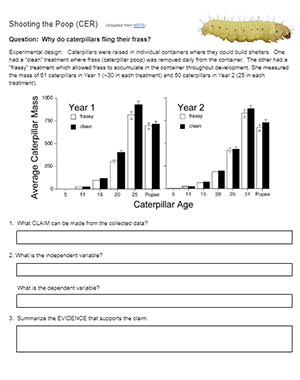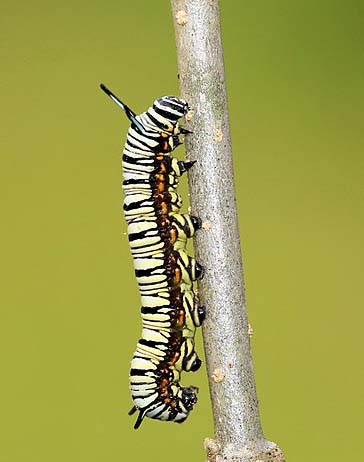
I modified this CER from the NSTA case study called “Shooting the Poop.” The case focuses on the observation that caterpillar will fling their feces away from the nest. You play play this short youtube clip to see the frass flinging fun. Is this an adaptive behavior? Do the caterpillars gain some benefit from keeping their shelters tidy?
The behavior likely has evolutionary origins.
Students first examine a graph that shows the age and mass of caterpillars from two groups: a clean group and a frassy group. Then, they make a CLAIM based on the data shown. They also identify the independent and dependent variables. Finally, students summarize the evidence that supports the claim being made in the graph. Overall, the graph shows the the tidy nests have larger larvae that pupate sooner.
In the second set of data, students determine if frass flinging has an effect on predation. They also identify the claim, variables, and create a summary of the evidence. In this final section, students must develop a reasoning statement that ideally will combine both sets of data to answer the original question.

I use this activity with a short unit on animal form and function. You can even order caterpillar kit for students to view actual caterpillars s they transform into butterflies. Other activities in this unit include an animal behavior lab and a rat dissection. Generally, this is the last unit before holiday break in December, so I tend to mix and match what I do depending on the time I have left.

